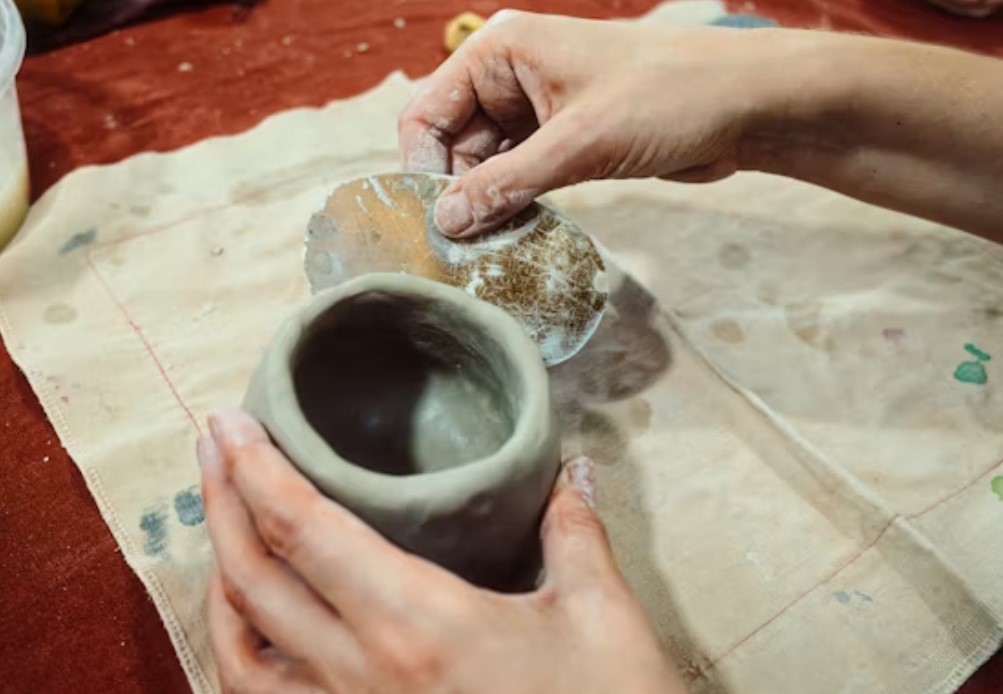Ceramics have long been admired for their durability, versatility, and aesthetic appeal. However, as industries evolve, there is an increasing demand for more sustainable and innovative materials. Enter Sodiceram, a groundbreaking development in the ceramic world that combines the best of both innovation and sustainability. With its foundation rooted in advanced chemical research, Sodiceram is paving the way for a new era of ceramics that are not only durable and functional but also eco-friendly. This article delves into the remarkable properties of Sodiceram, exploring its benefits, applications, and the exciting future ahead for this revolutionary material.
What is Sodiceram?
Sodiceram refers to ceramics that incorporate sodium-based compounds into their structure, a unique feature that sets them apart from traditional ceramic materials. These sodium-based formulations enhance the properties of ceramics in various ways, from improving strength and durability to enabling energy-efficient production processes. With origins in advanced chemical research, Sodiceram offers a more sustainable alternative to conventional ceramic products, which has made it a game-changer in numerous industries.
The Benefits of Using Sodium-Based Compounds in Ceramics
Sodiceram is not just a trend—it’s a technological advancement that significantly improves ceramic materials. Let’s explore some of the key benefits of using sodium-based compounds in ceramics:
1. Improved Durability and Strength
Sodium compounds are known to improve the structural integrity of ceramic materials. By incorporating sodium into the ceramic mix, manufacturers can create products that are stronger and more resistant to wear and tear. This enhanced durability makes Sodiceram ideal for applications where longevity is essential, such as in construction, automotive, and electronics.
2. Energy Efficiency in Production
One of the standout advantages of Sodiceram is its impact on the production process. The inclusion of sodium-based compounds allows for smoother and more efficient firing processes. This leads to significant energy savings during manufacturing, making Sodiceram an eco-friendly choice. In an era where sustainability is a key consideration, reducing energy consumption during production is a crucial benefit.
3. Enhanced Thermal Resistance
Ceramics made with Sodiceram exhibit lower thermal expansion rates, making them more resistant to cracking under temperature fluctuations. This property is particularly valuable in industries where products must endure extreme heat, such as in the automotive and aerospace sectors.
4. Improved Aesthetic Appeal
Another notable benefit of Sodiceram is its ability to create beautiful, visually appealing finishes. The integration of sodium into ceramic glazes enhances adhesion and promotes smooth, glossy surfaces. This makes Sodiceram ideal for applications where aesthetics are just as important as functionality, such as in the creation of high-end porcelain or decorative ceramics.
Types of Ceramics Produced with Sodiceram
Sodiceram has given rise to a wide range of ceramics that excel in both functionality and beauty. Here are some of the most popular types of ceramics produced with Sodiceram:
1. Porcelain
Porcelain is a delicate yet strong ceramic, and the incorporation of sodium-based compounds makes it even more durable without compromising its translucent appearance. Porcelain products made with Sodiceram maintain their elegance while offering enhanced strength, making them ideal for both functional and decorative applications.
2. Stoneware
Known for its durability and resistance to thermal shock, stoneware benefits greatly from the properties of Sodiceram. The addition of sodium compounds allows for a smoother finish, making it perfect for everything from kitchenware to artistic sculptures.
3. Earthenware
Earthenware, often used for pottery and decorative items, takes on vibrant colors when crafted using Sodiceram. The sodium-based compounds enhance the color vibrancy and texture, making it a favorite choice among artists and manufacturers seeking creative expression.
4. High-Performance Ceramics
In industries that require precision, such as electronics and aerospace, high-performance ceramics made with Sodiceram are crucial. These advanced formulations offer the durability and precision needed for specialized applications where material performance is critical.
Applications of Sodiceram in Various Industries
The versatility of Sodiceram makes it an ideal material for a wide range of applications across industries. Let’s explore how Sodiceram is being used in some of the most important sectors today.
1. Construction Industry
In the construction industry, Sodiceram is used for producing tiles, bricks, and other building materials. The strength and aesthetic appeal of Sodiceram make it a reliable choice for architectural designs, offering durability and a sleek finish that can withstand wear and tear.
2. Automotive Industry
The automotive industry benefits from Sodiceram’s heat-resistant properties. Components such as brake pads and exhaust systems, which are exposed to extreme temperatures, can be made more durable with Sodiceram. Its ability to resist thermal expansion also prevents cracking and ensures longevity under intense conditions.
3. Electronics
In the world of electronics, Sodiceram is used for insulators and substrates due to its excellent electrical resistance. These components help in ensuring the longevity and optimal performance of electronic devices, from smartphones to advanced medical equipment.
4. Art and Sculpture
Sodiceram’s ability to produce vibrant colors and intricate designs makes it a favorite among artists. Sodiceram-based ceramics are used for sculptures, decorative tiles, and other art pieces, allowing creators to explore new possibilities in their work.
5. Healthcare
Healthcare facilities use Sodiceram for medical devices and dental applications due to its biocompatibility. The material is safe for use in environments where health and safety are paramount, ensuring both functional and aesthetic qualities in medical equipment.
Advantages and Limitations of Sodiceram
Advantages
- Durability: Products made from Sodiceram tend to be more robust and wear-resistant than traditional ceramics, making them ideal for high-traffic and high-performance environments.
- Energy Efficiency: The production process for Sodiceram is more energy-efficient, which contributes to its sustainability.
- Thermal Resistance: Sodiceram’s ability to withstand extreme temperatures makes it ideal for industries like automotive and aerospace.
Limitations
- Production Complexity: The use of sodium-based compounds in ceramics requires specialized handling and processing, which can make production more complex and costly.
- Performance Variability: While Sodiceram offers numerous benefits, not all formulations will perform optimally under every condition. It’s essential for manufacturers to understand the nuances of working with Sodiceram.
The Future of Sodiceram
The future of Sodiceram is bright, with researchers continually exploring new sodium-based compounds that could further enhance the properties of ceramics. As the world increasingly embraces sustainability, Sodiceram stands out as a material that offers both environmental and functional benefits.
Innovations in 3D printing could also revolutionize how Sodiceram is used. Customizable designs and efficient production methods will allow for even more specialized applications. As more industries recognize the value of Sodiceram, its use is set to grow exponentially.
Conclusion: Why Sodiceram is the Future of Ceramics
Sodiceram is more than just a material—it’s a game-changer in the world of ceramics. With its sodium-based compounds, Sodiceram offers a range of benefits that make it a highly desirable option for industries across the board. Whether it’s for producing durable building materials, heat-resistant automotive parts, or artistic ceramics, Sodiceram offers unmatched versatility and performance.
As sustainability becomes increasingly important, Sodiceram offers a greener alternative to traditional ceramics, contributing to a more eco-friendly future. With the potential for future innovations and applications, Sodiceram is poised to redefine our expectations of ceramics, making it an essential material for the modern world.
Frequently Asked Questions
1. What makes Sodiceram different from traditional ceramics?
Sodiceram incorporates sodium-based compounds, which improve the strength, durability, and thermal resistance of the material. This makes it more suitable for high-performance applications and eco-friendly manufacturing.
2. Can Sodiceram be used in 3D printing?
Yes, Sodiceram is highly versatile, and future developments in 3D printing could further enhance its application, allowing for more customized and efficient production.
3. What industries benefit from using Sodiceram?
Industries such as construction, automotive, electronics, art, and healthcare are all benefiting from the unique properties of Sodiceram, making it an invaluable material in various fields.
4. Is Sodiceram environmentally friendly?
Yes, Sodiceram is considered an eco-friendly alternative to traditional ceramics, offering energy-efficient production processes and contributing to sustainable manufacturing practices.
For More Updates Visit: Biomagazine











Leave a Reply